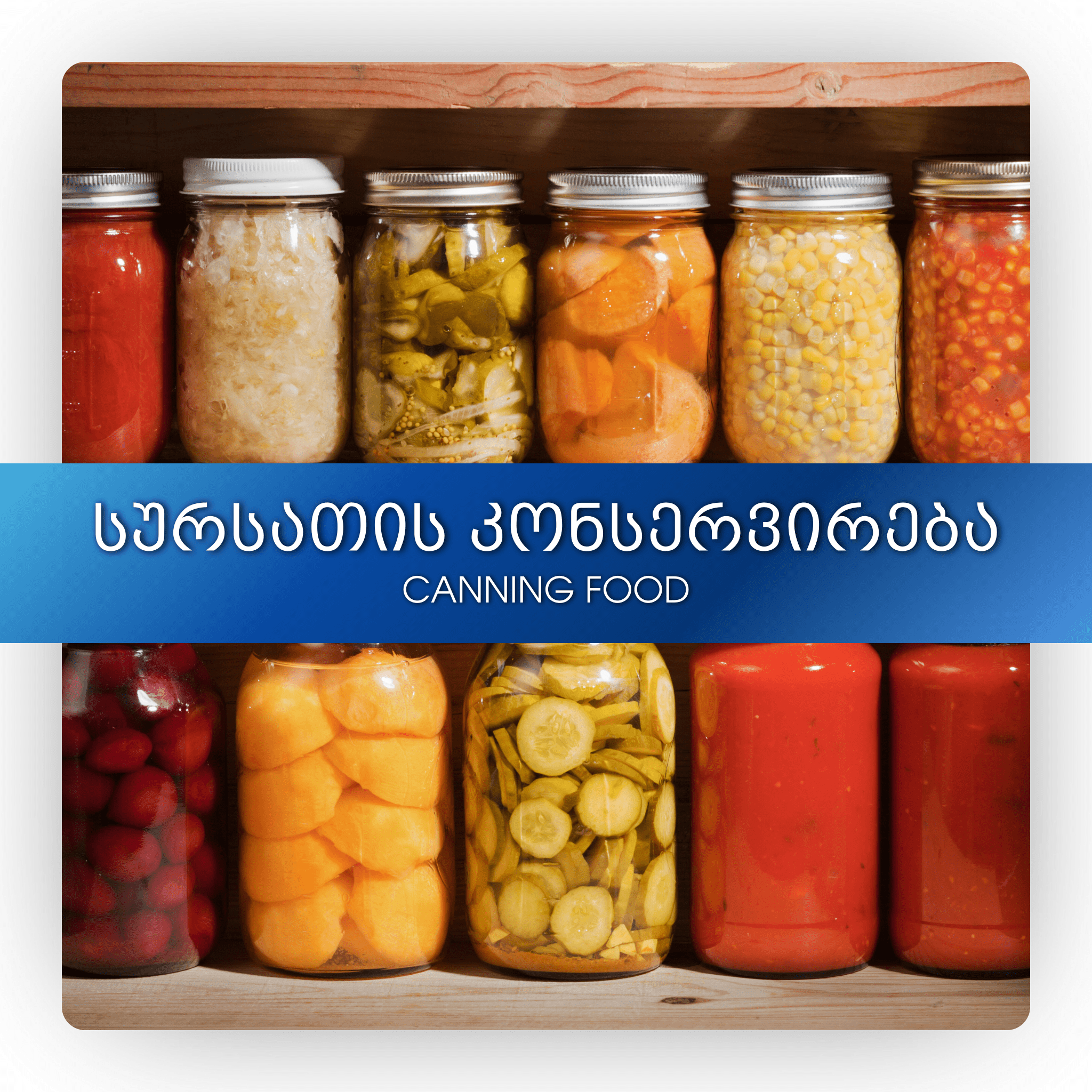Canning Food
To safely home can foods and prevent food-borne illness, research-based canning methods must be followed. Botulism is the most commonly associated food-borne illness with home canned foods. The Centers for Disease Control and Prevention reported that there were 210 outbreaks of botulism from 1996 to 2014, of which 145 were linked to home-canned foods.
Clostridium botulinum bacteria are the main reason why pressure canning is absolutely necessary for canning low-acid food. The bacterial cells are killed at boiling temperatures, but they can form spores that survive these temperatures. The spores grow well in low-acid foods, in the absence of air, such as in canned vegetables and meats. When the spores begin to grow, they produce the deadly botulinum toxin.
These spores can be destroyed by canning the food at a temperature of 116°C, or above, for the correct length of time. This temperature is above the boiling point of water (100°C) so it can only be reached in a pressure canner.
Safe Canning Methods
There are three safe ways of canning, depending on the type of food being canned. These are the boiling water bath method, the atmospheric steam canner method, and the pressure canner method.
Boiling Water Bath Method: The boiling water bath method is safe for fruits, tomatoes and pickles as well as jams, jellies and other preserves. In this method, jars of food are heated by being completely covered with boiling water (100°C at sea level).
Atmospheric Steam Canning Method: The steam canner must be used with naturally acidic or properly acidified foods .This includes most fruits, preserves, and pickled vegetables. The steam canner is NOT for low-acid foods such as vegetables and meats.The results of the study provided critical information, and practices that must be followed for the production of safe foods canned in a steam canner in place of a boiling water bath canner. In steam canners, the prepared jars are set in a rack above a reservoir of water. The steam created from boiling the water provides the thermal treatment to the jars. There are several advantages to using a steam canner. A steam canner uses less water than a boiling water bath canner, reaches processing temperatures quicker, and requires less energy.
Pressure Canning Methods: Pressure canning is the only safe method of canning low-acid foods (those with a pH of more than 4.6). These include all vegetables, meats, poultry and seafood. Because of the danger of botulism, these foods must be canned in a pressure canner. Jars of food are placed in 5 to 7 cm of water in a pressure canner and then heated to a temperature of at least 116 °C. This temperature can only be reached in a pressure canner.
Preparation for canning
1. Wash the food thoroughly, wash the product carefully, remove a small amount of food from the water, drain the water and continue rinsing until the water is clear and free of dirt. Dirt contains some of the most difficult bacteria to kill.
2. Inspect the cans and discard any that have creases, cracks, or rough edges. These defects do not allow the can to be hermetically sealed and will cause the food to spoil. All canning jars should be washed in soapy water and dried upside down to prevent recontamination.
3. Jars that will be filled with food and processed for less than 10 minutes in a boiling water bath canner need to be sterilized by boiling them for 10 minutes
4. Test the Lid for a Proper Seal: Most two-piece lids will seal with a “pop” sound while they’re cooling. When completely cool, test the lid. It should be curved downward and should not move when pressed with a finger. If a jar is not sealed, refrigerate it and use the unspoiled food within 2 to 3 days, reprocess within 24 hours, or freeze.
5. Label & Store Jars: Remove screw bands from the sealed jars to prevent them from rusting on. Wash, dry and store screw bands for later use. Wash food residue from the outside of the jars and rinse. Label, showing contents, date and lot number (if you canned more than one canner full that day).
Store in a clean, cool, dark, dry place. The best temperature is between 10 and 20 °C. Avoid storing canned foods in a warm place near hot pipes, a range or a furnace, or in direct sunlight. They lose quality in a few weeks or months, depending on the temperature, and may even spoil. Keep canned goods dry. Dampness may corrode metal lids and cause leakage so food will spoil. For best quality, use canned foods within one year.
There are some foods that should never be canned, even with a pressure canner. These foods are:
1. Eggs and Dairy(You can freeze dairy. You can even ferment and dehydrate some forms of dairy. But you can never can it. Since dairy is low-acid and high in fat (which can protect spores from being destroyed by heat), there’s just no safe tested method for canning dairy products at home.)
2. Flour, pasta, rice, cornstarch, etc. (more of a quality issue than a safety issue )
3. Oil (olive oil, avocado oil, coconut oil, etc. A little bit of oil in canning recipe is okay, but oil based foods like pesto or sun-dried tomatoes in oil should never be canned)
4. Purées (potato,pumpkin etc.) is another thing that should not be canned because the purée is too thick for even the heat of a pressure canner to penetrate and kill all of the harmful bacteria.
